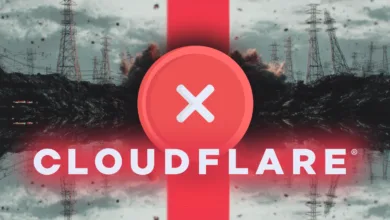Gemini 3 Arrived Just as the Internet Exhaled

▼ Summary
– A major Cloudflare outage caused widespread internet disruptions, affecting services like ChatGPT and X for millions of users.
– OpenAI experienced significant downtime, highlighting dependency risks for developers using its API and third-party apps.
– Google launched Gemini 3 shortly after the outage subsided, capitalizing on the timing to showcase its system’s reliability.
– The incident emphasized that infrastructure resilience and uptime are critical competitive factors in the AI industry.
– Google’s vertical integration of data centers and networking proved advantageous, contrasting with OpenAI’s vulnerability due to external dependencies.
The Day the Web Faltered
On an ordinary Tuesday in mid-November, vast sections of the internet flickered out, leaving engineers to wince. A significant Cloudflare outage, the backbone for a huge portion of global traffic, triggered a cascading failure, freezing services from ChatGPT to X. The interruption was brief, yet broad enough that millions felt the sudden silence.
OpenAI was among the earliest to go dark. As reports spread, its interface became unreachable, and third-party apps relying on its API sputtered. As often occurs during a large-scale outage, the news cycle rushed to diagnose the cause before engineers could finish patching. For developers building on these wrappers, the downtime exposed glaring dependency risks.
The clock became paramount. Traffic began flowing normally around 14:30 UTC. Teams still triaged deeper issues, but user-facing services gradually came back online. Then, a different kind of announcement shifted the global conversation from repair to release.
A Launch That Landed at the Perfect Hour
Roughly 90 minutes after the outage eased, Google hit the button: Gemini 3, its next major move in the large-model race. Reporters received the announcement at 16:00 UTC, a precise moment when timelines still buzzed with outage recaps and infrastructure autopsies.
The contrast was stark. OpenAI had spent hours recovering from a dependency failure. Google’s systems, by comparison, showed no strain. No scattered reports of Gemini failures, no developers complaining about API errors, no need to acknowledge anything beyond the model itself.
Whether planned or coincidental, the timing created a subtle narrative. Google delivered its flagship announcement on the same afternoon the web regained its footing, giving Gemini 3 an unintentional spotlight. This wasn’t merely a product launch; it was a live demonstration where the strengths and weaknesses of AI ecosystems became visible. One giant patched leaks, the other launched a battleship.

What the Timing Reveals About the AI Race
The outage didn’t declare which model is smarter, faster, or better at benchmarks. It illuminated a different truth: the reliability of underlying AI infrastructure now defines a central part of the competition. When a model integrates into everyday workflows, customer support, publishing tools, marketing pipelines, research automation, system uptime matters as much as capability.
Google’s tight integration of data centers, networking, and AI workloads suddenly appeared as a strategic advantage, not a bureaucratic quirk. This vertical integration, controlling everything from TPU chips to fiber cables, offers a critical buffer. OpenAI’s reliance on Cloudflare, while standard practice for modern internet services, saw shared dependencies morph into public vulnerabilities in moments like these.
Gemini 3 arriving immediately after restoration proved more than just good timing. It fundamentally shifted how people evaluate AI tools. Benchmarks remain relevant, but the day’s true story belonged to resilience, continuity, and the companies capable of sustaining their systems when the internet falters. As businesses embed these models deeper into their operations, the question is no longer just “How smart is it?” but “Will it still work when the rest of the web goes dark?”





